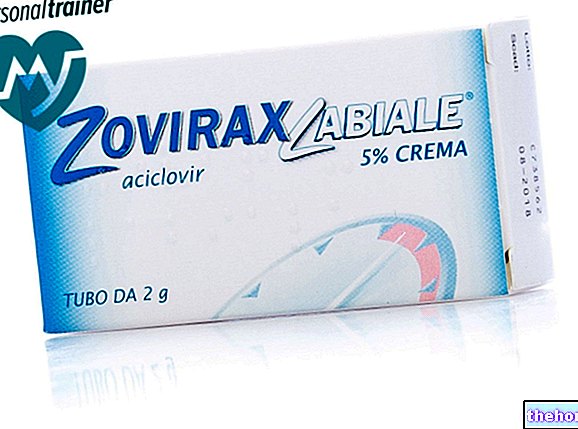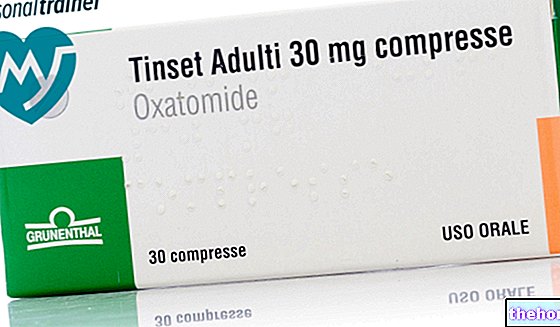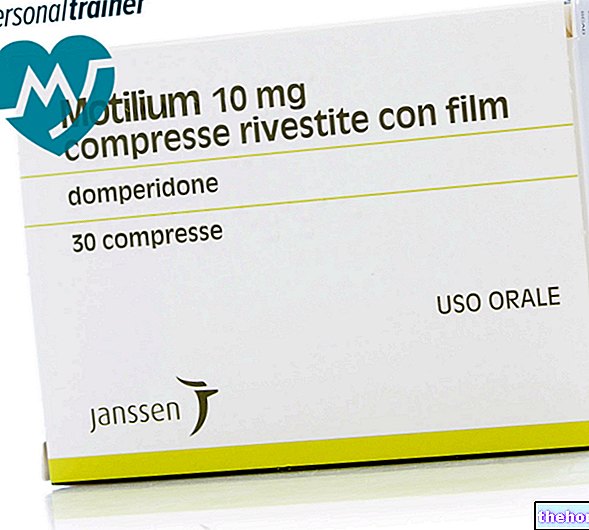Active ingredients: Morphine (Morphine sulfate)
TWICE 10 mg Prolonged-release hard capsules
TWICE 30 mg Prolonged-release hard capsules
TWICE 60 mg Prolonged-release hard capsules
TWICE 100 mg Prolonged-release hard capsules
Indications Why is Twice used? What is it for?
Pharmacotherapeutic group:
Opioid analgesics: natural alkaloids of opium
Therapeutic indications
Chronic intense pain and / or resistant to other painkillers, in particular pain of cancerous origin.
Contraindications When Twice should not be used
- TWICE is contraindicated in case of hypersensitivity to the components and other analgesic-narcotic drugs, in all forms of acute abdomen with paralytic ileus and should be used with caution in pregnancy and during lactation (see Special precautions for use).
- TWICE is also contraindicated in the states of depression of the S.N.C. (in particular those induced by other drugs such as hypnotics, sedatives, tranquilizers, etc.), in "acute alcoholism, in delirium tremens, in cranial traumas and in all conditions of intracranial hypertension, in convulsive states, in respiratory insufficiency and in" severe hepatocellular insufficiency.
- Furthermore, TWICE must not be administered during a bronchial asthma attack, in case of heart failure secondary to chronic lung diseases and after biliary tract surgery.
Precautions for use What you need to know before taking Twice
TWICE, like all morphine-based preparations, should be administered with caution in elderly or debilitated subjects and in patients suffering from:
- organic cerebral affections;
- respiratory depression;
- chronic lung diseases (particularly if accompanied by bronchial hypersecretion) and in any case in all obstructive conditions of the respiratory tract and in patients with reduced ventilatory reserve (as in the case of kyphoscoliosis and obesity);
- myxedema or hyperthyroidism;
- adrenocortical insufficiency, severe hypotensive states and shock;
- biliary colic; following surgery of the urinary ducts;
- prostatic hypertrophy;
- slowing of intestinal transit;
- intestinal affections of an inflammatory or obstructive type;
- acute and chronic liver diseases;
- chronic kidney disease.
TWICE, due to its analgesic effect and its action on the level of consciousness, pupil diameter and respiratory dynamics, can make the clinical evaluation of the patient difficult and hinder the diagnosis of acute abdominal pictures.
Drinking alcohol while taking TWICE may cause drowsiness or increase the risk of serious side effects such as shortness of breath with risk of respiratory depression and loss of consciousness. It is recommended not to drink alcohol while taking it.
Interactions Which drugs or foods may change the effect of Twice
The concomitant administration of other agents that depress the S.N.C. (alcohol, general anesthetics, hypnotics, sedatives, anxiolytics, neuroleptics, tricyclic antidepressants, antihistamines) can enhance the effects of morphine, particularly that of inhibition on respiratory function. Furthermore, morphine can reduce the action of diuretics and enhance the effects of neuromuscular blocking agents and muscle relaxants in general.
Warnings It is important to know that:
The administration of morphine, especially if prolonged, can determine the onset of tolerance and dependence.
Tolerance to the analgesic effect of morphine occurs as a progressive reduction in the efficacy and duration of analgesia and consequently leads to an increase in dosage. Tolerance to the inhibition of the breathing centers develops in parallel, so that the dosage adjustment does not involve the risk of respiratory depression. At the same time as tolerance to the different effects of morphine and with the same mechanism of action, addiction develops. Tolerance to narcotic-analgesics does not result from a phenomenon of receptor desensitization, but is an indication of the development of neurobiological mechanisms of opposite sign to those induced by the stimulation of opioid receptors. The establishment of adaptive mechanisms (which presuppose the synthesis of new protein molecules) re-establishes the balance of the function disturbed by the repeated pharmacological action of morphine. The new balance is supported by the stimulation of the µ-opioid receptors by morphine and by the adaptive mechanisms put in being by the body and lasts as long as morphine stimulates the µ-opioid receptors. In a condition of tolerance, the interruption of the administration of morphine highlights the functional activity of these mechanisms, which is revealed in terms of symptoms mirroring the acute effects of the narcotic: hyperalgesia and diffuse pain, diarrhea, mydriasis, hypertension, chills of cold, etc. These symptoms together constitute the "withdrawal syndrome", the appearance of which demonstrates the development of addiction.
Tolerance and dependence develop very slowly in the clinic if morphine is administered to prevent the onset of pain and not as needed. motivations behind the use of morphine and heroin other than those foreseen for the control of chronic pain in the clinic. For this reason, cases of high-grade tolerance and compulsive behaviors of appetite for the drug are rare which, if present, require specialist intervention. Even the possible phase of interruption of opioid therapy, to be implemented gradually, is not accompanied in the clinic by behavioral complications; provided that the algogenic cause has been removed. Moreover, the risk of addiction exists, so TWICE should not be used in painful states sensitive to less potent analgesics or in patients who are not under close medical supervision.
For those who carry out sporting activities: the use of the drug without therapeutic necessity constitutes doping and can "in any case determine positivity" to the anti-doping tests.
Pregnancy and breastfeeding
Ask your doctor or pharmacist for advice before taking any medicine. The safe use of TWICE during pregnancy has not been established. The use of the product, like all narcotic analgesics, is to be implemented with caution during pregnancy, bearing in mind that it can cause respiratory depression in the newborn if administered acutely or withdrawal syndrome if administered repeatedly. In any case, acute administration should be avoided in premature births or during the second phase of labor when the dilation of the uterine neck reaches 4-5 cm. Morphine salts are excreted in breast milk. Therefore, in women who are breastfeeding, it is necessary to carefully evaluate the benefit / risk ratio and decide on the advisability of administering the drug, giving up breast feeding or, vice versa, continuing to breastfeed avoiding the administration of the drug.
Driving and using machines
The acute administration of morphine affects the psychophysical faculties of the individual, can produce sedation and drowsiness, slow down the reflex responses to external stimuli and, therefore, reduce performance in driving cars. Tolerance to these effects arises in a few days and is complete. after a few weeks. Tolerance to the pharmacological effects of morphine diminishes and disappears in a few days after the interruption, together with the disappearance of withdrawal symptoms, ie tolerance.
Important information about some of the ingredients of TWICE
Twice contains sucrose which should be taken into account in diabetic patients and in patients who follow low-calorie diets.
Dosage and method of use How to use Twice: Dosage
The gelatinous capsules should be swallowed without being chewed. In adults the recommended dose is one capsule twice a day with an interval of 12 hours between one and the other. The doses vary according to the severity of the pain and the analgesic treatments previously received by the patient. persistent or addictive to morphine, the dosage can be increased with the prescription of capsules of 10 mg, 30 mg, 60 mg and 100 mg, in a single administration, whether or not associated with each other, to obtain the " desired effect.
Always maintain the 12 hour interval between administrations. In patients already treated with immediate release oral morphine, the daily dosage of TWICE will remain unchanged but divided into two administrations with a 12 hour interval between one and the other.
For patients already treated with parenteral morphine, the dosage should be increased to compensate for the decrease in the analgesic effect due to the lower bioavailability of the oral formulations. The increase in dosage can vary from 50 to 200 percent. The useful dosage should be determined on the individual patient possibly using a liquid morphine formulation. For patients with swallowing difficulties, the contents of the capsules can be administered via a gavage.
The duration of morphine treatment required by each patient varies in relation to the intensity of the painful symptoms and the type of pathology.
Overdose What to do if you have taken too much Twice
Overdosing of narcotic-analgesics causes severe respiratory, circulatory and consciousness depression that can progress to respiratory arrest, collapse and coma. Other signs of acute toxicity are extreme myosis, hypothermia, and flaccidity of the skeletal muscles. In the phase of deep coma there is relaxation of the sphincters, including the pupillary one and, therefore, mydriasis.
Administer intravenous naloxone at doses between 0.4 and 2 mg until the patient awakens, who must resume breathing independently, avoiding as much as possible the triggering of a withdrawal crisis. Consciousness is then maintained by administering naloxone by intravenous infusion at a dosage that avoids withdrawal symptoms until plasma agonist concentrations have reached a safe level. Empty the stomach by gastric lavage, bearing in mind that the TWICE microgranules remaining in the intestine will continue to release morphine for a period of a few hours; however, a laxative can be administered to activate peristalsis.
IF YOU HAVE ANY DOUBTS ABOUT USING TWICE, CONTACT YOUR DOCTOR OR PHARMACIST
Side Effects What are the side effects of Twice
Like all medicines, TWICE can cause side effects, although not everybody gets them.
The table below shows the adverse reactions, by system organ class.
- respiratory depression is generally of a mild or moderate degree and without significant consequences in subjects with integrity of the respiratory function; however, it can induce serious consequences in patients with broncho-pulmonary affections such as the formation of areas of atelectasis
- it can aggravate pre-existing pathologies of the brain
- as regards the withdrawal syndrome, see the section "Special Warnings"
- it can accentuate the feeling of nausea and epigastric discomfort and accentuate or trigger the pain of biliary colic
- it can accentuate the consequences of reduced testosterone production in the male
- reduces the increase in corticotropin-releasing factor (CRF) resulting from stress and gonadoreline. Consequently, there is a decrease in the production of ACTH and glucocorticoids, as well as LH, FSH and sex steroids
- reduces peripheral resistance and reduces vasomotor reflexes
- it can slow down the progression of the peristaltic wave
Expiry and Retention
Check the expiration date indicated on the package.
Warning: do not use the medicine after the expiry date indicated on the package.
The expiry date refers to the product in intact packaging, correctly stored.
Do not store above 25 ° C.
Keep this medicine out of the reach and sight of children.
It is important to always have the information on the medicine available, so keep both the box and the package leaflet.
Medicines should not be disposed of via wastewater or household waste. Ask your pharmacist how to throw away medicines you no longer use. This will help protect the environment.
Composition and pharmaceutical form
Composition
10 mg capsules
Each capsule contains: Active ingredient: Morphine sulfate 10 mg; Excipients: Sucrose and corn starch microgranules, macrogol 4000, aquacoat ECD 30, dibutylsebacate, talc. Capsule constituents: gelatin, quinoline yellow E 104, titanium dioxide E 171, black iron oxide
30 mg capsules
Each capsule contains: Active ingredient: Morphine sulfate 30 mg; Excipients: Sucrose and corn starch microgranules, macrogol 4000, aquacoat ECD 30, dibutylsebacate, talc. Capsule constituents: gelatin, titanium dioxide E 171, erythrosine E 127, black iron oxide
60 mg capsules
Each capsule contains: Active ingredient: Morphine sulfate 60 mg; Excipients: Sucrose and corn starch microgranules, macrogol 4000, aquacoat ECD 30, dibutylsebacate, talc. Capsule constituents: gelatin, titanium dioxide E 171, orange yellow S E 110, black iron oxide
100 mg capsules
Each capsule contains: Active ingredient: Morphine sulfate 100 mg; Excipients: Sucrose and corn starch microgranules, macrogol 4000, aquacoat ECD 30, dibutylsebacate, talc. Capsule constituents: gelatin, titanium dioxide E 171, black iron oxide
Pharmacutical form and content
Prolonged-release hard capsules, for oral use; in the packs:
Carton containing 16 capsules of 10 mg
Carton containing 16 capsules of 30 mg
Carton containing 16 capsules of 60 mg
Carton containing 16 capsules of 100 mg
Source Package Leaflet: AIFA (Italian Medicines Agency). Content published in January 2016. The information present may not be up-to-date.
To have access to the most up-to-date version, it is advisable to access the AIFA (Italian Medicines Agency) website. Disclaimer and useful information.
01.0 NAME OF THE MEDICINAL PRODUCT
TWICE
02.0 QUALITATIVE AND QUANTITATIVE COMPOSITION
Each 10 mg capsule contains: 10 mg morphine sulfate
Each 30 mg capsule contains: 30 mg morphine sulfate
Each 60 mg capsule contains: 60 mg morphine sulfate
Each 100 mg capsule contains: 100 mg morphine sulfate
03.0 PHARMACEUTICAL FORM
Prolonged-release hard capsules, for oral use.
04.0 CLINICAL INFORMATION
04.1 Therapeutic indications
Chronic intense pain and / or resistant to other painkillers, in particular pain of cancerous origin.
04.2 Posology and method of administration
The gelatinous capsules must be swallowed without being chewed. In adults, the recommended dose is one capsule twice a day with an interval of 12 hours between one and the other. Doses vary according to the severity of pain and analgesic treatments previously received by the patient. In case of persistent pain or the onset of tolerance to the analgesic effect of morphine, the dosage can be increased with the prescription of capsules of 10 mg, 30 mg, 60 mg and 100 mg, in a single administration, whether combined or not. one to the other, to obtain the desired effect.
Always maintain the 12 hour interval between administrations.
In patients already treated with immediate release oral morphine, the daily dosage of TWICE will remain unchanged but divided into two administrations with a 12-hour interval between one and the other.
For patients already treated with parenteral morphine, the dosage should be increased to compensate for the decrease in the analgesic effect due to the lower bioavailability of the oral formulations. The increase in dosage may vary from 50 to 200 percent. The useful dosage should be determined on the individual patient possibly using a liquid morphine formulation. For patients with swallowing difficulties, the contents of the capsules can be administered via a gavage.
The duration of morphine treatment required by each patient varies in relation to the intensity of the painful symptoms and the type of pathology.
04.3 Contraindications
TWICE it is contraindicated in case of hypersensitivity to morphine and its derivatives, in all forms of acute abdomen with paralytic ileus and is generally contraindicated in pregnancy and during lactation (see Special precautions for use)
TWICE it is also contraindicated in the states of depression of the S.N.C. (in particular those induced by other drugs such as hypnotics, sedatives, tranquilizers, etc.), in "acute alcoholism, in delirium tremens, in cranial traumas and in all conditions of intracranial hypertension, in convulsive states, in respiratory insufficiency and in" severe hepatocellular insufficiency.
TWICE Furthermore, it must not be administered during an attack of bronchial asthma, in case of heart failure secondary to chronic lung diseases and after surgery on the biliary tract.
TWICE and monoamine oxidase inhibitor drugs (MAOIs): various technical data sheets of analgesic narcotics and also some pharmacology texts underline the use of morphine in patients receiving MAOIs as contraindicated. In fact, it is established that the association of meperidine with MAOIs can give rise to severe reactions such as intense depression or respiratory stimulation, delirium, hyperpyrexia and convulsions; but no adverse interactions have been reported with other narcotic-analgesics.
04.4 Special warnings and appropriate precautions for use
The administration of morphine, especially if prolonged, can determine the onset of tolerance and dependence.
There tolerance to the analgesic effect of morphine occurs as a progressive reduction of the efficacy and duration of analgesia and consequently leads to an increase in dosage. Tolerance to inhibition of the breathing centers develops in parallel, so that the dosage does not involve the risk of respiratory depression. Simultaneously with tolerance to the different effects of morphine and with the same mechanism of action, the dependence. Tolerance to narcotic-analgesics does not result from a phenomenon of receptor desensitization, but is an indication of the development of neurobiological mechanisms of opposite sign to those induced by the stimulation of opioid receptors. The establishment of adaptive mechanisms (which presuppose the synthesis of new protein molecules) re-establishes the balance of the function disturbed by the repeated pharmacological action of morphine. The new balance is supported by the stimulation of the µ-opioid receptors by morphine and by the adaptive mechanisms put in being by the body and lasts as long as morphine stimulates the µ-opioid receptors. In a condition of tolerance, the interruption of the administration of morphine highlights the functional activity of these mechanisms, which is revealed in terms of symptoms mirroring the acute effects of the narcotic: hyperalgesia and diffuse pain, diarrhea, mydriasis, hypertension, chills of cold, etc. These symptoms together constitute the "withdrawal syndrome ", the appearance of which demonstrates the development of addiction.
Tolerance and dependence develop very slowly in the clinic, if morphine is administered to prevent the onset of pain and not as needed. The mechanisms of drug addiction with "craving " (drug addiction) to opiates presuppose a phase of self-administration, that is, dosage schedules and motivations behind the intake of morphine and heroin other than those envisaged for the control of chronic pain in the clinic. For this reason, cases of high-grade tolerance and compulsive drug appetite behaviors which, if present, require specialist intervention. Even the eventual phase of interruption of opioid therapy, to be implemented gradually, is not accompanied in the clinic by behavioral complications; provided that the algogenic cause has been removed.
Moreover, the risk of addiction exists, so it is TWICE it must not be used in painful states sensitive to less potent analgesics or in patients who are not under close medical supervision.
Tolerance to the pharmacological effects of morphine is attenuated and disappears in a few days after the interruption, together with the disappearance of withdrawal symptoms, that is, tolerance.
TWICE, like all morphine-based preparations, it should be administered with caution in elderly or debilitated subjects and in patients suffering from:
- organic cerebral affections;
- respiratory depression;
- chronic lung diseases (particularly if accompanied by bronchial hypersecretion) and in any case in all
- obstructive conditions of the respiratory tract and in patients with reduced ventilatory reserve (such as in the case of kyphoscoliosis and obesity);
- myxedema or hyperthyroidism;
- adrenocortical insufficiency, severe hypotensive states and shock;
- biliary colic and following surgery of the bile or urinary ducts;
- prostatic hypertrophy;
- slowing of intestinal transit;
- intestinal affections of an inflammatory or obstructive type;
- acute and chronic liver diseases;
- chronic nephropathies.
TWICE, due to its analgesic effect and its action on the level of consciousness, pupil diameter and respiratory dynamics, it can make the clinical evaluation of the patient difficult and hinder the diagnosis of acute abdominal pictures.
04.5 Interactions with other medicinal products and other forms of interaction
The concomitant administration of other agents that depress the S.N.C. (alcohol, general anesthetics, hypnotics, sedatives, anxiolytics, neuroleptics, tricyclic antidepressants, antihistamines) can enhance the effects of morphine, particularly that of inhibition on respiratory function.
Furthermore, morphine can reduce the action of diuretics and enhance the effects of neuromuscular blocking agents and muscle relaxants in general.
04.6 Pregnancy and breastfeeding
The safety of use of TWICE during pregnancy has not been ascertained. The use of the product as with all narcotic analgesics is to be implemented with caution during pregnancy, bearing in mind that it may cause respiratory depression in the newborn if administered acutely or withdrawal syndrome if administered repeatedly.
In any case, acute administration should be avoided in premature births or during the second phase of labor when the dilation of the uterine neck reaches 4-5 cm. Morphine salts are excreted in breast milk. Therefore, in women who are breastfeeding, it is necessary to carefully evaluate the benefit / risk ratio and decide on the advisability of administering the drug, giving up breast feeding or, vice versa, continuing to breastfeed avoiding the administration of the drug.
04.7 Effects on ability to drive and use machines
The acute administration of morphine affects the psychophysical faculties of the individual, can produce sedation and drowsiness, slow down the reflex responses to external stimuli and, therefore, reduce performance in driving cars. Tolerance to these effects arises in a few days and is complete. after a few weeks.
04.8 Undesirable effects
Affected by the central nervous system: the product, even at therapeutic doses, causes respiratory depression and to a lesser extent circulatory depression. Respiratory depression is generally of a mild or moderate degree and without significant consequences in subjects with integrity of the respiratory function; however, it can induce serious consequences in patients with broncho-pulmonary affections such as the formation of areas of atelectasis.
However, severe respiratory and circulatory depression up to respiratory arrest and collapse has been reported following oral or parenteral administration of narcotic-analgesics.
Other neurological effects reported are: miosis, disturbed vision, headache, dizziness, increased intracranial pressure which can aggravate pre-existing pathologies of the brain.
Psychological modifications are also possible, such as excitement, insomnia, irritability, agitation, euphoria and dysphoria, or sedation and asthenia, depression of mood, dullness and states of indifference.
At the expense of the cardiovascular system: acute administration of morphine produces peripheral vasodilation, reduces peripheral resistance and attenuates vasomotor reflexes. These effects are not felt by the patient in the supine position, but can give rise to episodes of orthostatic hypotension and syncope if the patient assumes an upright position . To these effects tolerance arises after a few repeated administrations over a short period of time.
Affecting the gastro-intestinal system: acute administration of morphine can produce nausea and retching, both by stimulation of the CTZ and by sensitization to labyrinth stimulation. Morphine reduces gastric and duodenal secretion, increases the tone of the intestinal smooth muscles and slows the progression of the peristaltic wave, thus producing spastic constipation.
Affecting the biliary tract: acute administration of morphine produces constriction of the sphincter of Oddi and consequent increase in pressure in the biliary tract, which can accentuate the sense of nausea and epigastric discomfort and accentuate or trigger the pain from biliary colic.
At the expense of the endocrine system: Morphine reduces the increase in corticotropin-releasing factor (CRF) resulting from stress and gonadoreline. Consequently, there is a decrease in the production of ACTH and glucocorticoids, as well as LH, FSH and sex steroids. Morphine it also increases the increase in prolactin, which can accentuate the consequences of the reduced production of testosterone in the male. Finally, it can increase the production of antidiuretic hormone (ADH).
Affected by the urogenital system: morphine increases the muscle tone of the ureters, but the effect is balanced by the oliguria of hormonal origin. Prolongs the emptying time of the bladder, but this effect quickly appears tolerance.
On the skin: Acute administration of morphine can produce redness of the face, neck and upper chest regions, sweating, itching, hives and other skin rashes.
For the withdrawal syndrome see section 4.4.
04.9 Overdose
Overdosing of narcotic-analgesics causes severe respiratory, circulatory and consciousness depression that can progress to respiratory arrest, collapse and coma. Other signs of acute toxicity are extreme myosis, hypothermia, and flaccidity of the skeletal muscles. In the phase of deep coma there is relaxation of the sphincters, including the pupillary one and, therefore, mydriasis.
Administer intravenous naloxone at doses between 0.4 and 2 mg until the patient awakens, who must resume breathing independently, avoiding as much as possible the triggering of a withdrawal crisis. Consciousness is then maintained by administering naloxone by intravenous infusion at a dosage that avoids withdrawal symptoms until plasma agonist concentrations have reached a safe level.
Empty the stomach by gastric lavage, bearing in mind that the microgranules of TWICE remained in the intestine will continue to release morphine for a period of a few hours; however, a laxative can be administered to activate peristalsis.
05.0 PHARMACOLOGICAL PROPERTIES
05.1 Pharmacodynamic properties
Opioid analgesics: natural alkaloids of opium
Action on the central nervous system.Morphine has a central analgesic action; it also acts on the tone of the mood and produces a feeling of well-being and euphoria (10 mg) induces numbness and less frequently gives excitement.
On the respiratory centers morphine exerts, starting from the therapeutic dose, a depressive action. It depresses the cough centers and acts on the vomiting center (in moderate doses and in subjects who have never taken morphine, it has an emetic effect; in doses stronger and with repeated administration, exerts an "antiemetic action).
Finally, morphine causes miosis of central origin. This sign can sometimes indicate the presence of a state of chronic intoxication.
Action on smooth muscles. Morphine decreases the tone and peristalticism of the longitudinal fibers and increases the tone of the circular fibers, which causes a spasm of the sphincters (pylorus, ileocecal valve, anal sphincter, sphincter of Oddi, bladder sphincter). This action translates clinically into phenomena of constipation, in an increase in pressure in the biliary channels, in the appearance of spasms in the urinary tract.
05.2 "Pharmacokinetic properties
Prolonged-release form that allows for oral administration twice a day. Maximum serum morphine concentrations are reached in 2-4 hours. After absorption, morphine is 30% bound to plasma proteins.
Morphine is subject to an important hepatic metabolization giving rise to glucuroconjugate derivatives that undergo an enterohepatic cycle. Elimination occurs essentially via the urine, by glomerular filtration, mainly in the form of glucuroconjugated derivatives. Elimination in faeces is poor (
05.3 Preclinical safety data
LD50 in mice per os: 650 mg / kg; in the rat per os: 460 mg / kg; in the guinea pig per os 1000 mg / kg.
In humans, morphine toxicity has been studied in cases of overdose, but due to the great variability in individual sensitivity to opioids it is difficult to determine the exact toxic or lethal dose.
The presence of tolerance decreases the toxic effects of morphine.
06.0 PHARMACEUTICAL INFORMATION
06.1 Excipients
10 mg capsules
Microgranules of sucrose and corn starch; polyethylene glycol 4000, aquacoat ECD 30, dibutylsebacate, talc.Constituents of the capsule: gelatin, quinoline yellow E 104, titanium dioxide E 171, black iron oxide.
30 mg capsules
Microgranules of sucrose and corn starch, polyethylene glycol 4000, aquacoat ECD 30, dibutylsebacate, talc. Constituents of the capsule: gelatin, titanium dioxide E 171, erythrosine 127, black iron oxide.
60 mg capsules
Microgranules of sucrose and corn starch, polyethylene glycol 4000, aquacoat ECD 30, dibutylsebacate, talc. Constituents of the capsule: gelatin, titanium dioxide E 171, orange yellow S E 110, black iron oxide.
100 mg capsules
Microgranules of sucrose and corn starch, polyethylene glycol 4000, aquacoat ECD 30, dibutylsebacate, talc. Constituents of the capsule: gelatin, titanium dioxide E 171, black iron oxide.
06.2 Incompatibility
Not known.
06.3 Period of validity
In intact packaging: 36 months.
06.4 Special precautions for storage
Store at a temperature not exceeding 25 ° C
06.5 Nature of the immediate packaging and contents of the package
Thermoformed blisters (aluminum / PVC).
Cartons containing 16 gelatinous capsules.
16 capsules of 10 mg
16 capsules of 30 mg
16 capsules of 60 mg
16 capsules of 100 mg
06.6 Instructions for use and handling
None.
07.0 MARKETING AUTHORIZATION HOLDER
Joint Chemical Companies Angelini Francesco A.C.R.A.F. S.p.A.
Viale Amelia 70
00181 ROME
08.0 MARKETING AUTHORIZATION NUMBER
16 capsules of 10 mg (A.I.C. 033484015)
16 capsules of 30 mg (A.I.C. 033484027)
16 capsules of 60 mg (A.I.C. 033484039)
16 capsules of 100 mg (A.I.C. 033484041)
09.0 DATE OF FIRST AUTHORIZATION OR RENEWAL OF THE AUTHORIZATION
June 9, 2005
10.0 DATE OF REVISION OF THE TEXT
November 13, 2008




























